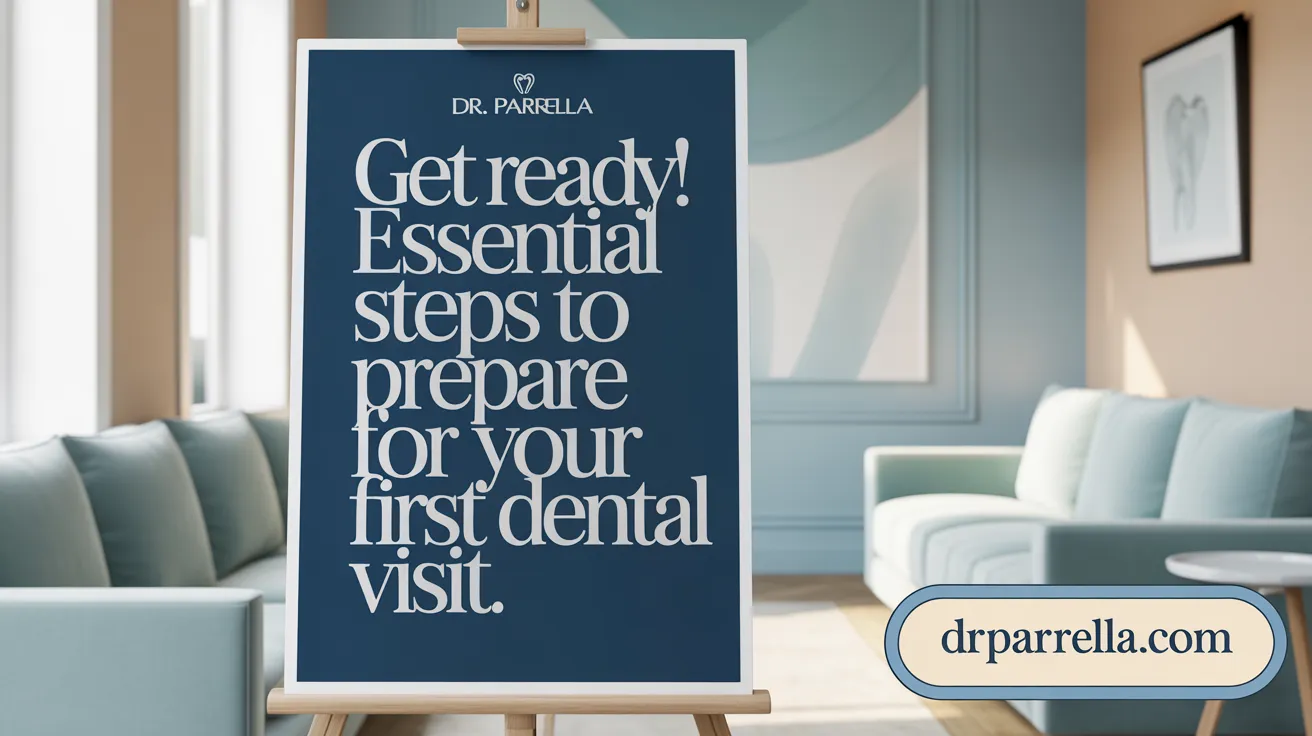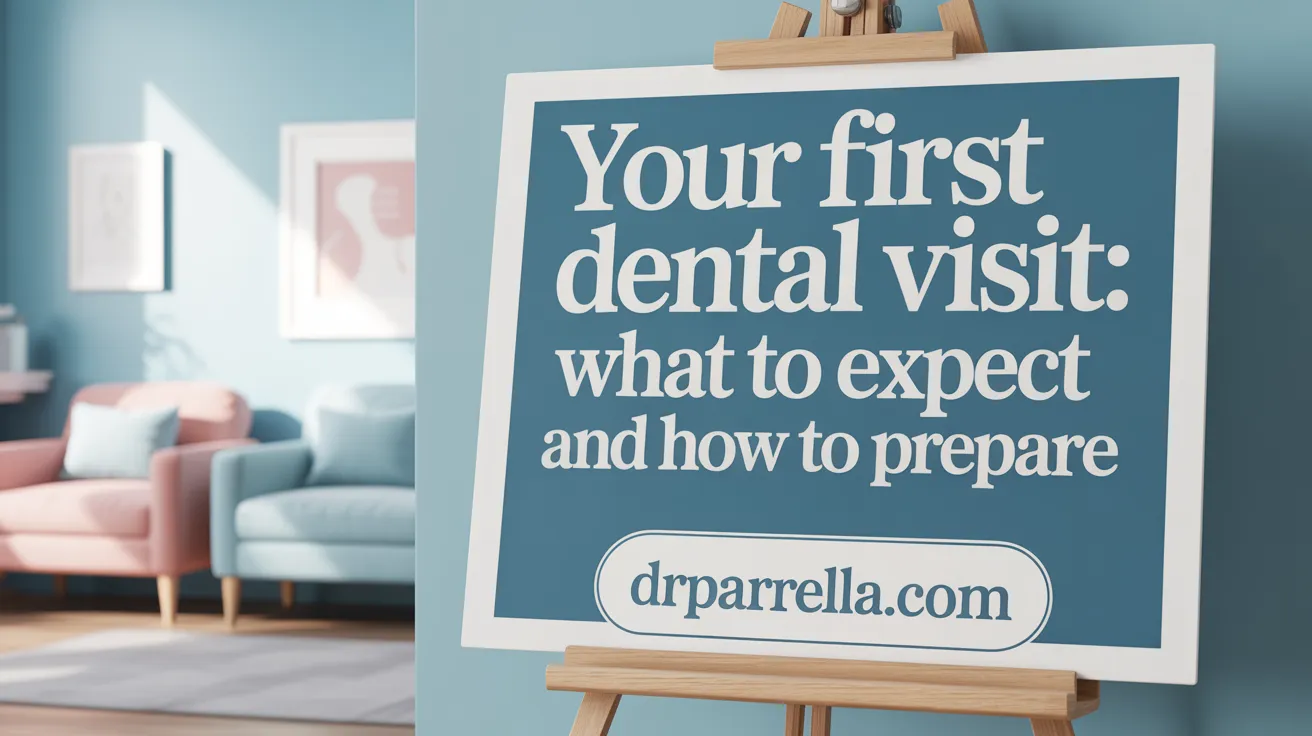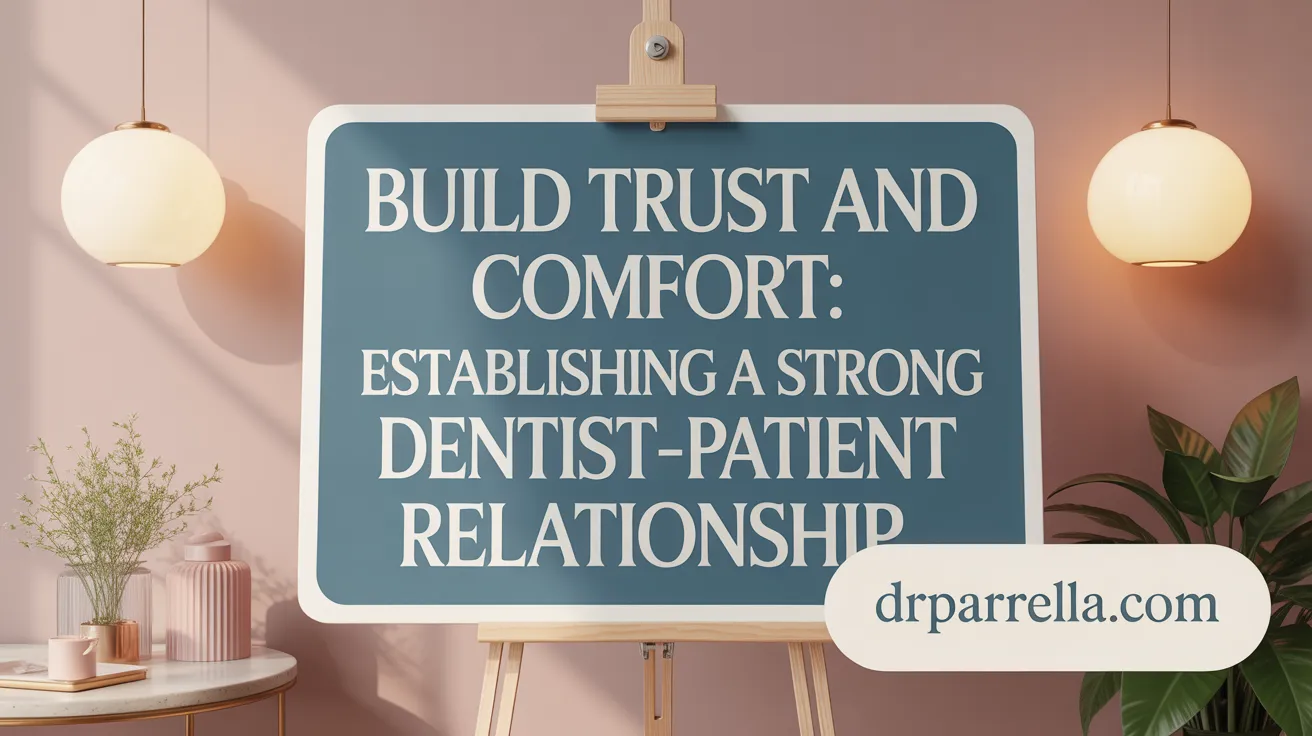Introduction to Your First Dental Appointment
Visiting a dental office for the first time can be a pivotal step toward maintaining a healthy smile and overall wellness. Proper preparation eases anxiety, enhances communication, and ensures your dental team can provide effective, personalized care. This article guides new patients through a comprehensive checklist to prepare for their initial appointment, what to expect during their visit, and how to build a lasting relationship with their dental provider.
Preparing for Your First Dental Appointment: Key Steps

Gathering comprehensive medical and dental history
Before your first dental visit, it's important to prepare a detailed medical and dental history. This includes previous dental treatments, current medications, allergies, and any health conditions like diabetes or heart disease. Providing this information helps your dentist tailor care to your needs and enhances safety during procedures. See more on comprehensive medical history for dental visits.
Verifying insurance and coverage details
Check your dental insurance coverage ahead of the appointment to understand what procedures are covered and what costs to expect. Bring your insurance card and ID to facilitate billing and ensure a smooth process. For details, visit Verifying Dental Insurance Coverage and Dental Appointment Insurance Card.
Arriving early and bringing necessary documents
Plan to arrive 10-15 minutes early on your appointment day. This allows you to complete paperwork such as new patient forms, which may be available online in advance for convenience. Bring photo identification, insurance cards, a list of current medications, and any previous dental records or x-rays you may have. Learn more about Arriving Early for Your Dental Appointment and First appointment checklist.
Preparing questions and concerns for discussion
Write down any questions or concerns regarding your oral health, such as pain, sensitivity, or cosmetic goals. Sharing these with your dental team ensures all issues are addressed and helps you feel confident about your care. See advice on Questions to Ask Your Dentist and Checklist of questions for your dentist.
Maintaining good oral hygiene before the appointment
Brushing and flossing before your visit ensures that your teeth and gums are clean, allowing the dentist to perform a thorough and accurate assessment. Avoid eating sugary foods or drinks immediately before your appointment to aid in evaluation. For more, see Maintaining Oral Hygiene Before Your Visit and Importance of Brushing Before Dental Visits.
Communicating specific needs such as anxiety or health changes
If you have dental anxiety, physical limitations, or recent changes in your health or medications, inform your dental provider ahead of time. This enables the team to accommodate your needs with appropriate support measures like sedation options or extra explanations. Learn about dental anxiety accommodations and Reporting health changes for dental care.
Planning ahead with these steps will help your first dental appointment proceed smoothly and set a positive foundation for your ongoing oral health.
What to Expect During Your Initial Visit

Check-in Process and Paperwork Completion
Upon arrival, new patients are advised to arrive early for your dental appointment (10-15 minutes) to allow time for check-in and completing necessary paperwork. This typically includes providing personal and insurance information, medical and dental history, allergies, medication details, and consent forms. Bringing previous dental records and a list of current medications can streamline this process and help dental staff prepare for personalized care (new patient forms and insurance information).
Comprehensive Dental Exam
The initial visit involves a comprehensive dental exam of the teeth, gums, bite, and jaw function. The dentist assesses for cavities, gum disease, bite alignment, jaw joint health, and previous dental work. This comprehensive health evaluation ensures a complete understanding of the patient’s oral status (comprehensive dental examination details).
Digital X-rays and Diagnostic Imaging
Advanced digital X-rays and diagnostic imaging are often taken during the first appointment to detect hidden issues such as decay, impacted teeth, bone loss, or cysts. Digital imaging provides immediate results with minimal radiation exposure compared to traditional methods (digital X-rays benefits).
Oral Cancer Screening and Health Evaluations
A visual and tactile oral cancer screening is standard, inspecting the lips, cheeks, tongue, gums, mouth roof, and throat. Vital signs like blood pressure may also be measured to provide a holistic health perspective (oral cancer screenings and health evaluations).
Professional Cleaning and Hygiene Assessment
Depending on oral health status, professional dental cleaning may be performed during the first visit. This includes removal of plaque and tartar, polishing teeth, and discussing oral hygiene habits with a dental hygienist. Preventive treatments such as fluoride application might also be recommended (professional dental cleaning process.
Discussion of Exam Findings and Personalized Treatment Planning
The dentist discusses exam results in detail, highlighting any concerns or treatment options. A customized treatment plan is developed collaboratively, addressing oral health needs, patient goals, and financial considerations (dental treatment plan creation).
Duration and Typical Procedures
First appointments typically last about 60 to 90 minutes, allowing ample time for examination, diagnostics, cleaning, and thorough consultation. Some practices schedule cleanings separately based on initial findings (duration of initial dental exam.
Comfort Measures for Nervous Patients
Dental teams prioritize patient comfort by offering dental anxiety accommodations, sedation options, gentle communication, breaks, calming music, or visual distractions to help ease anxiety and promote a positive experience (gentle dental care approach).
By understanding these standard procedures and preparations, patients can approach their initial dental visit with confidence and readiness.
Building a Positive Dentist-Patient Relationship

Why Trust and Communication Matter
Trust and clear communication between you and your dentist are crucial for effective dental care. A strong relationship encourages openness about your oral health concerns and comfort in sharing habits or anxieties that may impact treatment. This connection helps your dentist tailor care to your needs and supports long-term oral health maintenance. For more on building trust with your dentist, see Building Trust with Your Dentist.
Choosing the Right Dentist
Selecting a dentist with appropriate qualifications and experience is important. Look for credentials, ongoing education, and positive patient reviews or recommendations. These indicators reflect the quality of care and professionalism you can expect, helping you feel confident in your choice. For guidance on choosing a qualified dentist and understanding dentist credentials, visit Choosing the Right Dentist.
The Dental Office Atmosphere
A warm and welcoming dental office environment sets the tone for a positive experience. Friendly staff who greet you by name and interact personally can reduce anxiety and make visits more pleasant. Small touches like a welcome packet with oral health supplies and informational materials enhance comfort and trust. Learn more about creating a friendly environment and positive dental first impressions at The Patient's First Visit.
Personalized Staff Interactions
Receptionists and dental team members trained to use patients’ names and make personal connections help foster a supportive atmosphere. Prompt, personal greetings and attentive service communicate care and respect, easing first-visit nerves. See Greeting New Dental Patients for best practices on patient reception.
Patient Education and Support
Providing clear educational resources and support materials tailored to patient needs empowers you to participate actively in your dental care. Understanding procedures, treatments, and preventive measures reduces uncertainty and builds confidence. For a comprehensive guide on preparing for your first dental appointment and patient education, visit Your First Dental Visit.
Addressing Dental Anxiety
Many patients experience dental anxiety accommodations. Practices that offer gentle care, calming music, sedation options, and distractions can help you feel safe and relaxed. Communicating your fears enables the dental team to adjust their approach, making your visits more comfortable. Additional tips on managing dental anxiety can be found at What to Expect at Your First Dental Visit.
Insurance, Billing, and Financial Considerations

Verifying Insurance Coverage Ahead of Your Visit
Before your dental appointment, verifying your dental insurance coverage is essential. This ensures you understand what treatments your plan covers and helps facilitate smoother billing processes. Confirming your insurance details with the dental office in advance reduces the chance of unexpected charges.
Bringing Insurance Cards and Identification
Always bring your dental insurance card and a valid photo ID to your visit. These documents are necessary for identity verification and accurate billing. Additionally, having your medications and medical history on hand can aid personalized treatment planning.
Understanding Out-of-Pocket Costs and Payment Options
Dental treatments can involve out-of-pocket expenses. It’s important to discuss anticipated costs with your dental provider ahead of time. Clear communication about available treatment options, their costs, and insurance coverage will help you make informed decisions about your care.
Financing Plans and Discounts for Uninsured Patients
Many dental offices offer financing plans for dental care, such as CareCredit, Cherry®, or Affirm®, to help manage costs over time. Discount plans or special offers, like new patient specials, may be available for those without insurance, ensuring access to essential dental care.
Scheduling Follow-Ups and Managing Appointment Reminders
After your visit, the dental office typically assists in scheduling follow-up appointments for treatments or routine cleanings. Automated reminders via text or email help you keep track of your appointments, supporting consistent and ongoing oral health maintenance.
Post-Visit Care and Maintaining Oral Health
Scheduling follow-up appointments and regular checkups
After your initial dental visit, it's important to schedule follow-up appointments and routine checkups. Regular visits, ideally every six months, help monitor your oral health, catch problems early, and maintain ongoing care. These appointments may include exams, cleanings, or further treatment as recommended.
Implementing dentist recommendations for at-home care
Dentists often provide personalized advice for home oral care based on your examination. Following these instructions—such as using specific brushing or flossing techniques, lifestyle changes, or dietary adjustments—can improve your dental health and extend the benefits of professional care.
Importance of routine visits every six months
Routine visits every six months are essential even for people practicing good daily oral hygiene. These visits enable early detection of cavities, gum disease, or other issues before they worsen. Regular dental cleanings during these visits help remove plaque and tartar buildup that cannot be removed by brushing alone (Professional Dental Cleaning Benefits.
Awareness of symptoms and timely reporting to dentist
Stay alert to symptoms like swollen or bleeding gums, mouth sores, bad breath, tooth sensitivity, or jaw pain. Reporting these signs promptly to your dentist allows for early intervention that can prevent more serious problems or complex treatments later (Symptoms to Report to Dentist).
Maintaining good oral hygiene and preventive treatments
Consistent brushing and flossing remain crucial to maintaining oral health. Additionally, your dentist may recommend preventive treatments such as fluoride applications or dental sealants. Fluoride strengthens enamel and helps prevent decay, while sealants protect vulnerable chewing surfaces from cavities.
Role of fluoride treatments and sealants in prevention
Fluoride treatments and sealants serve as important barriers against dental decay. Fluoride varnishes are often applied during dental visits to reinforce tooth enamel. Sealants are thin protective coatings applied to molars’ surfaces, especially beneficial for children or individuals prone to cavities (Preventive Dental Treatments).
Together, these measures form a comprehensive approach to post-visit care and ongoing oral health maintenance, ensuring your smile stays healthy for years to come.
Ensuring a Successful Dental Experience
Preparing thoughtfully for your first visit to a dental office sets the foundation for a comfortable, efficient, and productive dental experience. By following a comprehensive checklist—covering medical history, appointment logistics, and active communication—you empower your dental team to provide tailored care. Understanding what to expect during the visit and maintaining ongoing oral health practices contribute to lasting wellness and confidence in your smile. A positive relationship with your dentist built on trust and clear communication will support your oral health for years to come.
